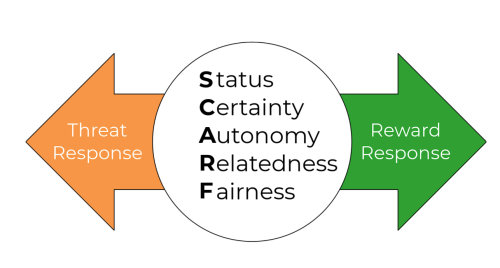
Completing a change impact assessment is a core capability of a change practitioner, yet there is rarely any training or guidance on how to do this. Regardless of your project ‘type’ – agile or waterfall, technology implementation or organisational change - you need to complete an impact assessment as part of your change role.
Some projects may only need the lighter touch of a high-level impact assessment, and many will need the deluxe version – the detailed impact assessment. So, the ability to understand the approach, how to scale the level of the assessment and how to complete and present the assessment is an essential component of your change toolkit.
Completing a Change Impact Assessment helps prepare people for the technical or functional changes from new systems, software, or processes. It also reflects the complexity of the change for users and the degree of risk around the successful adoption. Completing a Change Impact Analysis is critical to doing good change management work. The Change Impact Analysis details how the organisation is currently working “as-is” and what the future looks like “to be.” Often, we do this by looking through the lens of several dimensions, such as people, processes, technology, policies, culture, etc. Once we have completed this analysis, we will use this work to inform our Change Management Plan and Roadmap.
Learn how to conduct an impact assessment
Allegra Consulting hosts regular Change Impact Assessment 1-Day Workshops. Join us for a hands-on session where we will cover all the critical elements that should be considered when assessing Business Change Impact. Find out more information and register here.
Five reasons why you need an impact assessment for your change project to succeed
- Identifies hot spots for change effort across the business – it provides a view of which business units and/or process groups and teams will be impacted the most and least. It can be represented as a heat map to show an enterprise view.
- Shows the hot spots for other change projects – when liaising with other project teams, you can see which business units and/or teams are impacted by any ongoing change projects. This will help with resource planning, the ability to release SMEs and indicate the capacity to absorb the change.
- It helps you plan relevant change interventions – knowing the nature of the impacts and where they will occur gives you insights to plan your change approach, e.g., training, change champion networks, engagement forums, communications, super users, etc. This is the backbone of your change plan.
- Drives discussion with stakeholders – visibility of impacts opens a discussion with a common understanding of the scale of the change and who else is impacted, along with a shared understanding of issues, challenges and interventions needed.
- Determines overall scope and scale of the change – with a view of the scope and scale of the change, you can identify and mitigate any potential risks and issues before they arise.
Getting Started
If you are in the early stages of a project, it can be helpful to start with an early change assessment focusing on questions such as:
- How many business units will be affected?
- What are the locations of the affected business units (i.e., are they in one location or dispersed across multiple locations, nationally or globally)?
- Does the change involve the introduction of new technology?
- How will people’s roles change (changes to existing roles, newly created roles, role redundancy)?
- Will people need to think or behave differently for this change to be successful? Does the change involve new ways of working?
- How will processes change?
- How will the change impact external clients and customers?
The answers to the above questions can be turned into a short narrative that you can use to engage stakeholders and start to talk about required change resourcing and early impacts on the business and end users.
Planning the more detailed assessment
Getting into your more detailed impact assessments, you want to be clear before you start the work on the dimensions you intend to use.
Dimensions in their easiest form are People, Processes and Technology. We tend to use broader ones like Culture/Ways of Working, Capability, Services/Products, Policies, Technology, Organisational Structure, Governance, and 3rd Party Suppliers. We find that using broader dimensions helps ensure you don’t miss impacts.
From there, you are thinking about your impact rating scale and how you will complete it. I am a big fan of facilitating impact assessment sessions and using software tools to help you do this remotely.










